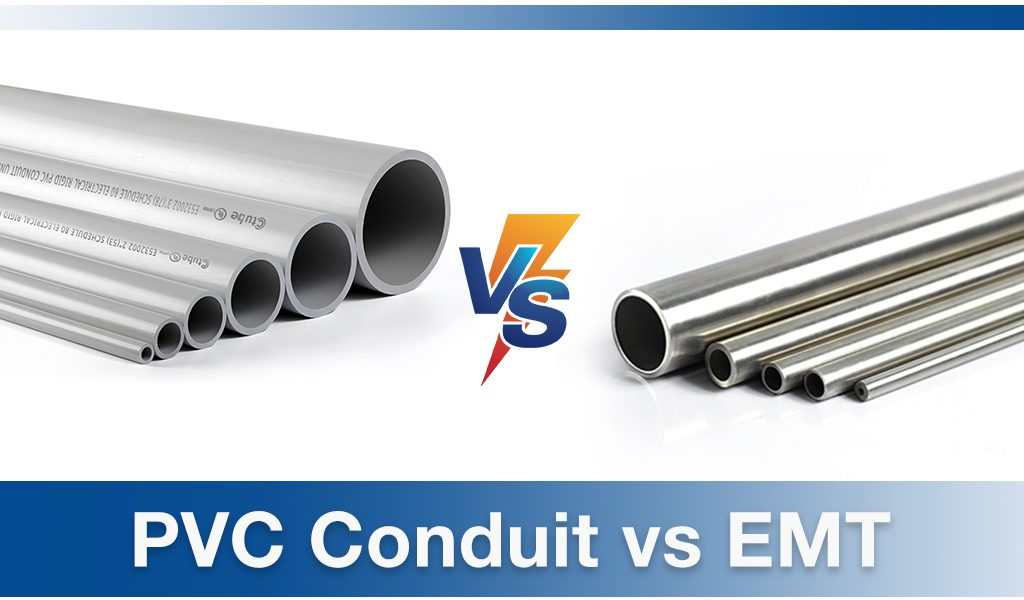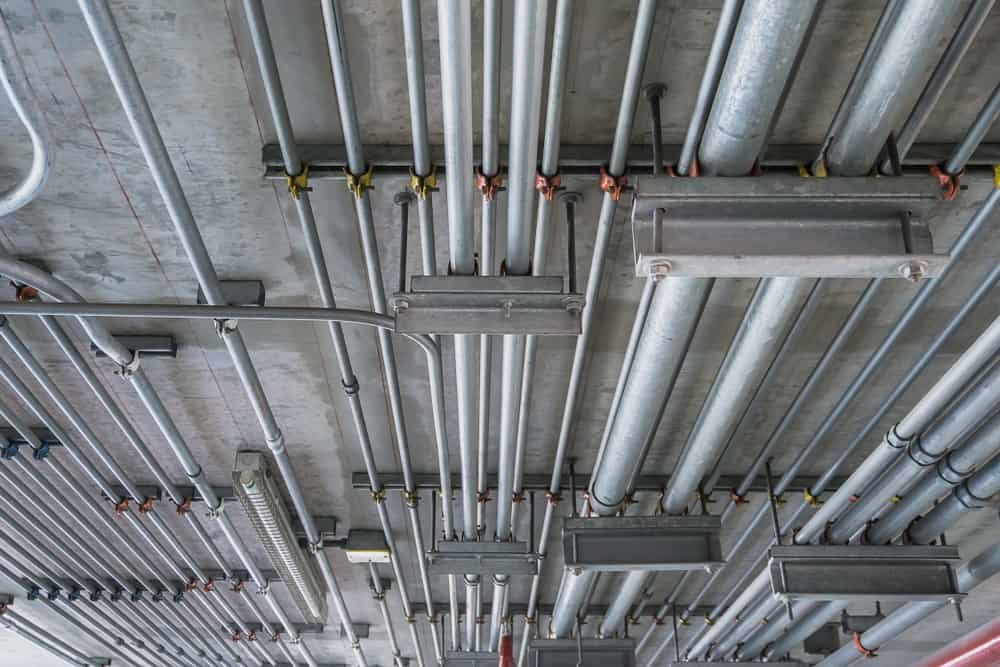PVC Conduit VS EMT Conduit: Making Informed Choices For Electrical Projects
Electrical projects, whether residential, commercial, or industrial, rely heavily on the careful selection of conduit systems. These conduits serve as the lifelines of electrical wiring, providing protection, organization, and support to the cables within. The significance of conduit selection cannot be overstated, as it directly impacts the safety, efficiency, and longevity of the electrical infrastructure.
Consequently, understanding the differences between various conduit options is paramount for electrical contractors, engineers, and project managers.Among the plethora of choices available, PVC electrical conduits and EMT electrical conduits emerge as two common contenders.Each offers distinct characteristics, advantages, and applications, making them prevalent choices in the electrical industry.In this article, we’ll delve into the nuances of PVC conduit and EMT electrical conduits.
What is PVC electrical conduit?
PVC electrical conduit, short for Polyvinyl Chloride conduit, is a widely used option in electrical installations due to its versatility and durability.
Constructed from PVC resin—a synthetic polymer—PVC electrical conduit is known for its lightweight yet sturdy composition.
The conduit is typically manufactured through an extrusion process, forming rigid tubes with smooth interior surfaces.
What is EMT electrical conduit?
EMT or Electrical Metallic Tubing, is a type of conduit made from thin-walled steel tubing. EMT is generally made of coated steel, though it may be aluminum.
The steel tubing is coated with a layer of zinc through a process called galvanization, protecting against corrosion.
EMT electrical conduit is known for its lightweight yet durable construction, making it suitable for a wide range of electrical applications.
What is the difference between PVC conduit and EMT ?
As previously stated, the variance in materials between PVC electrical conduit and EMT electrical conduit fundamentally influences their distinct cost and performance characteristics.
1. Cost:
PVC electrical conduit is often preferred for electrical installations due to its cost-effectiveness. Compared to EMT electrical conduit, PVC conduit typically offers a more budget-friendly option without compromising on basic functionality. Its affordability makes it an attractive choice for projects where keeping costs low is a priority. Additionally, PVC conduit is lightweight and easy to work with, which can further contribute to cost savings by reducing labor and installation time.
On the other hand, EMT electrical conduit, while slightly more expensive than PVC, offers distinct advantages in terms of durability and mechanical protection. Made of galvanized steel, the EMT conduit provides superior strength and rigidity, making it suitable for installations where the conduit may be exposed to physical stress or mechanical damage. Its robust construction also enhances its resistance to impact, crushing, and environmental hazards, making it a good choice for industrial and commercial applications where the protection of electrical wiring is paramount.
2. Durability:
EMT electrical conduit, constructed from steel, is renowned for its robust protection and longevity in electrical installations. The steel composition of the EMT conduit provides exceptional strength and durability, making it highly resistant to physical impacts, crushing forces, and environmental factors.
In contrast, PVC electrical conduit, while durable in its own right, may not offer the same level of impact resistance or environmental resilience as steel conduit.
3. Weight and Installation:
PVC electrical conduit is prized for its lightweight nature, ease of transport, and simple assembly process. It can be easily cut and manipulated using basic tools, which makes it particularly convenient for quick installations, especially in residential or non-industrial settings. Its lightweight properties also contribute to reduced labor and installation time.
On the other hand, EMT electrical conduit is known for its rigidity and initial difficulty in cutting. However, with the appropriate tools and techniques, it is possible to bend the EMT conduit to fit specific installation requirements. Due to its metal composition, EMT conduit is naturally heavier than PVC conduit, which can make handling and transportation more challenging, especially in larger installations.
4. Fire Safety Standards:
EMT electrical conduit’s steel construction provides enhanced fire resistance when compared to PVC electrical conduit. Furthermore, the galvanized coating applied to the EMT conduit provides an additional layer of protection against corrosion and heat, further bolstering its fire-resistant properties.
In contrast, PVC electrical conduit has limited fire resistance compared to certain metallic conduit options. PVC is a thermoplastic material that can soften. Some lower-quality or substandard PVC conduits may deform, and even ignite when exposed to high temperatures.
5. Temperature Sensitivity:
The robust materials used in EMT Electrical conduit contribute to its superior heat resistance compared to PVC conduit.
While PVC electrical conduit may have temperature limitations and can deform or melt when exposed to high temperatures, EMT conduit maintains its structural integrity due to its sturdy construction. This durability allows the EMT conduit to withstand extreme heat conditions without compromising its functionality or performance, making it a reliable choice for applications requiring resistance to elevated temperatures.
However, it’s important to note that prolonged exposure to high temperatures can still affect the performance of any material, including the EMT conduit, and proper installation practices should always be followed to ensure optimal performance and safety.
6. UV Degradation:
Furthermore, EMT Electrical conduit demonstrates better resistance to UV degradation compared to PVC conduit. While both types of conduits may be affected by exposure to sunlight, EMT conduit is less susceptible to UV damage and maintains its durability and effectiveness for longer periods. This enhanced UV resistance makes EMT conduit a preferred choice for outdoor installations or areas with high sun exposure.
7. Corrosion Resistance
PVC pipes are renowned for their resistance to rust and corrosion, primarily because they do not react with air or water.
However, in contrast, the EMT electrical conduit, typically made of galvanized steel, offers enhanced protection against corrosion due to its durable construction. Despite this advantage, prolonged exposure to moist environments can accelerate the corrosion process, potentially compromising the conduit’s integrity and impeding the transmission of electrical wires. In such cases, timely maintenance or replacement becomes necessary to ensure uninterrupted wire transmission and prevent safety hazards.
How to Choose Between PVC Conduit and EMT Conduit?
When selecting between PVC and EMT electrical conduit, it’s crucial to evaluate project requirements, environmental factors, and budget constraints.
1. Assess the environmental conditions of the installation site, including exposure to moisture, chemicals, and corrosive substances.
2. Consider temperature extremes and UV exposure if the conduit will be installed outdoors or in areas with direct sunlight exposure.
3. Evaluate the cost of materials and installation, and the long-term maintenance requirements of each conduit type.
4. Ensure that the chosen conduit type meets regulatory compliance standards and insurance requirements for the specific project and installation site.
5. Consulting with industry experts and reviewing past case studies can provide valuable insights into successful conduit selection.
By carefully weighing these factors, you can ensure the optimal choice of conduit for your electrical project, enhancing efficiency, reliability, and safety.
Certainly, as a PVC electrical conduit manufacturer,Ctube is committed to meeting the needs of our customers and continuously pursuing innovative research and development. We’ve remained dedicated to improving the drawbacks of PVC electrical conduit and fittings by focusing on products that boast greater waterproofing, corrosion resistance, and pressure resistance, along with enhanced UV and fire resistance. Our products are certified by UL 651, CSA, AS/NZS 2053, CE, ROHS, IEC, etc.
Additionally, we have developed low-smoke and halogen-free conduits to further enhance safety and environmental considerations.
If you’re interested in our products, feel free to contact us anytime.
PVC Conduit VS EMT Conduit: Making Informed Choices For Electrical Projects Ler mais »




